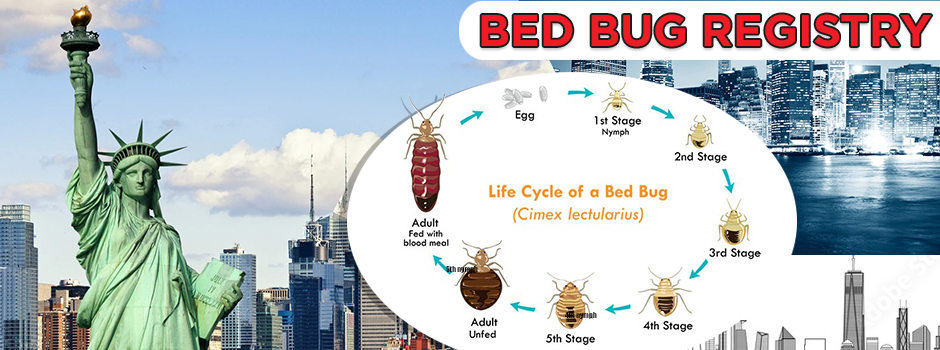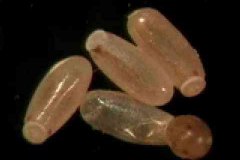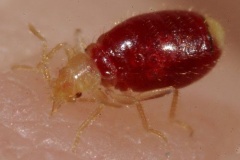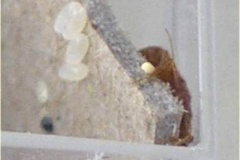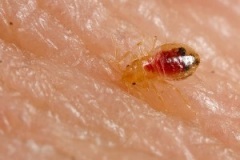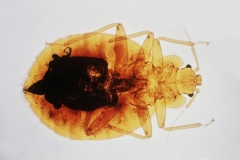CHAPTER 2.5.Bed Bug Infestations 1954.1. The Legislature finds and declares:
(a)Controlling bed bugs is uniquely challenging, as bed bug resistance to existing insecticidal control measures is significant. Cooperation among landlords, tenants, and pest control operators is required for successful control.
(b)Tenants, property owners, and pest control operators have distinct rights and responsibilities regarding bed bug infestations.
(c)Effective control is more likely to occur when landlords and tenants are informed of the best practices for bed bug control.
(d)Early detection and reporting of bed bugs is an important component required for preventing bed bug infestations. Tenants should not face retaliation for reporting a problem.
(e)Lack of cooperation by landlords and tenants can undermine pest control operator efforts to identify the presence of bed bugs and control an infestation. Depending on the treatment strategy, it is often critical that tenants cooperate with pest control operators by reducing clutter, washing clothes, or performing other activities. Likewise, inadequate or untimely response or planning by landlords may exacerbate an infestation.
(f)Specific, enforceable duties of tenants and landlords are necessary so that the failure of a tenant or landlord to cooperate fully does not prevent effective investigation, treatment, and monitoring of all infested and surrounding units.
(a)Bed bug management plan means a written plan prepared by a pest control operator for a property. The plan will outline the responsibilities of the landlord and tenants and shall be consistent with NPMA best practices and tailored to the conditions at the property. The plan shall include, but is not limited to, the following:
(1)Education of tenants to reduce the risk of introduction of bed bugs to the property and to encourage reporting. Education methods and frequency shall be based on resources of the landlord.
(2)Housekeeping and building maintenance procedures to help prevent bed bug harborage, including recommendations from a pest control operator about correcting bed bug hiding places and entry points, for example by sealing cracks and crevices in walls, ceilings, and floors, and fixing loose moldings and peeling wallpaper.
(3)The landlords process for responding to complaints and a brief statement of the requirements of this chapter.
(4)Written documentation of any bed bug treatment program.
(5)Use of monitoring devices on a proactive basis, routine monitoring inspections by trained employees or licensed pest control operators, if appropriate, as determined by the pest control operator and based upon the resources of the landlord.
(6)A complaint log that documents compliance with this chapter.
(b)Bed bug treatment program means a program, based on NPMA best practices, for treating an infestation to remove or kill visible and accessible bed bugs and their eggs, either immediately or through residual effects. The program shall be structured to continue until the infestation is controlled.
(c)Complaint log means part of a bed bug management plan that tracks a landlords ongoing responses to each bed bug report over the preceding two years. The complaint log shall include, but is not limited to, records pertaining to verification inspection and inspection inspections and inspections of adjacent units, results of inspections, records of notices provided to tenants, unit preparation inspections, treatment type, locations and dates, and followup inspections.
(d)Inspection means an investigation of the premises, using NPMA best practices to confirm or rule out a bed bug infestation, to identify all infested areas to determine treatment tactics, or to verify that an infestation has been eliminated.
(e)NPMA best practices means best management practices for bed bugs issued by the National Pest Management Association in effect on January 1, 2015. 2016. NPMA best practices does not include practices or actions that conflict with federal or state law.
(f)Pest control operator means an individual with a Branch 2 license from the Structural Pest Control Board.
(g)Pretreatment checklist means unit preparation requirements tailored to the treatment method, consistent with NPMA best practices, including, but not limited to, easy-to-understand instructions, pictures, and diagrams, prepared by the pest control operator and provided to tenants by the landlord or pest control operator. The checklist shall include instructions for how to treat tenant clothing, personal furnishings, and other belongings, if treatment is required, and shall provide contact information for the pest control operator to answer questions prior to treatment.
(a)General information about bed bug identification, behavior and biology, the importance of cooperation for prevention and treatment, and the importance of and for prompt written reporting of suspected infestations to the landlord. The information shall be in substantially the following form:
Information about Bed Bugs
Bed bug Appearance: Adult bed bugs have flat bodies about 1/4 of an inch in length. They are copper colored and have six legs. Young bed bugs are nearly colorless and are very small, about 1/16 of an inch in length. Bed bugs do not fly. They either crawl or are carried from place to place. When a bed bug feeds, its body swells and becomes bright red, making it appear to be a different insect. Bed bugs can be hard to find and identify because they are tiny and try to stay hidden.
Life Cycle and Reproduction: The typical lifespan of a bed bug is 10 months. They can survive for months without feeding. Female bed bugs lay one to five eggs per day. Bed bugs grow to full adulthood in about 21 days.
Bed bug Bites: Because bed bugs usually feed at night when people are sleeping, most people do not realize they were bitten. Bed bugs do not transmit disease but are a nuisance. A persons reaction to insect bites is an immune response and so varies from person to person. Sometimes the red welts caused by the bites will not be apparent until many days after a person was bitten.
Common signs of bed bugs and symptoms of a possible infestation:
Small red to reddish brown fecal spots on mattresses, upholstery, or walls.
Molted bed bug skins, white, sticky eggs, or empty eggshells.
Very heavily infested areas may have a characteristically sweet odor.
Red, itchy bite marks, especially on the legs, arms, and other body parts exposed while sleeping.
More information: See the websites web sites of the United States Environmental Protection Agency, California Department of Public Health, California State Structural Pest Control Board, and the National Pest Management Association.
(b)The procedure to report suspected infestations to the landlord.
(c)Whether If applicable, a statement that the property has a bed bug management plan.
(d)A copy of this chapter.
(b)Within five business days after a tenant or a public agency notifies a landlord of an infestation or a suspected infestation, the landlord shall retain the services of a pest control operator to verify the tenants complaint suspected infestation and to conduct an inspection, if determined to be necessary by the pest control operator.
(c)Entry to inspect a tenants dwelling unit shall comply with Section 1954. Entry to inspect any unit selected by the pest control operator and to conduct followup inspections of surrounding units until bed bugs have been eliminated is a necessary service for the purpose of Section 1954. Tenants shall cooperate with the inspection to facilitate the detection and treatment of bed bugs, including providing requested information that is necessary to facilitate the detection and treatment of bed bugs to the pest control operator.
(d)If a pest control operators inspection confirms that a bed bug infestation exists:
(1)The landlord shall notify all tenants of units identified for treatment by the pest control operator of the findings of infestation. The notification shall be in writing and made within 48 hours two business days of receipt of the pest control operators findings. For confirmed infestations in common areas, all tenants shall be provided notice of the pest control operators findings.
(2)If further inspections of the affected units or surrounding units are necessary as determined by the pest control operator, based on the NPMA best practices, subsequent notices shall include information about future inspections, unless that information was disclosed in a prior notice. Each subsequent entry shall require a separate notice conforming to Section 1954.
(b)At least seven calendar days prior to treatment, the landlord shall provide to the affected tenants with the following:
(1)A cover sheet from the landlord, in at least 10-point type, disclosing:
(A)The date or dates of treatment, the deadline for tenant preparation of the unit, and the date, approximate hour, and length of time, if any, the tenant shall be required to be absent from the unit.
(B)A statement that the tenant may request assistance or an extension of time to prepare the unit, to the extent required by law, to reasonably accommodate a disability.
(C)A statement that a tenant not entitled to a reasonable accommodation under law may also request an extension of time to prepare the unit.
(2)A pretreatment checklist with information provided by the pest control operator, which shall be in accordance with NPMA best practices.
(c)The tenant shall fulfill his or her responsibilities for unit preparation before the scheduled treatment, as described in the pest control operators pretreatment checklist. Tenants shall be responsible for the management of their belongings, including, but not limited to, clothing and personal furnishings.
(d)Tenants who are not able to fulfill their unit preparation responsibilities shall promptly notify the landlord. For a tenant not entitled to a reasonable accommodation under law who requests an extension of time to prepare the unit, the landlord shall extend the preparation time by three business days.
(e)If an extension of time is provided in order to reasonably accommodate a tenant required under law to receive a reasonable accommodation, or for other tenants as provided in subdivision (d), the landlord shall provide all affected tenants with a notice of the revised dates and times specified in subparagraph (A) of paragraph (1) of subdivision (a) (b), as necessary.
(f)A tenant shall cooperate in vacating his or her unit as notified for treatment purposes and shall not reenter the unit until directed by the pest control operator to do so.
(g)Inspection of unit preparation and bed bug treatment and posttreatment inspection and monitoring of all affected and surrounding units as recommended by the pest control operator are a necessary service for the purpose of Section 1954. In addition to the cover sheet and any revisions under subdivision (e), the landlord shall provide separate written notice of entry pursuant to Section 1954 to affected tenants for all treatments and inspections.
(a)Of a size as to readily contain the disposed material.
(b)Labeled as being infested with bed bugs.
(c)Furnished as needed to the tenant by the property owner landowner or pest control operator.
(b)The comprehensive ordinances and regulations of the City and County of San Francisco regarding the treatment and control of bed bug infestations are deemed to satisfy this chapter and are not preempted.
See original here:
Bill Text - AB-551 Rental property: bed bugs. - California

 Residence
Residence  Location
Location 
